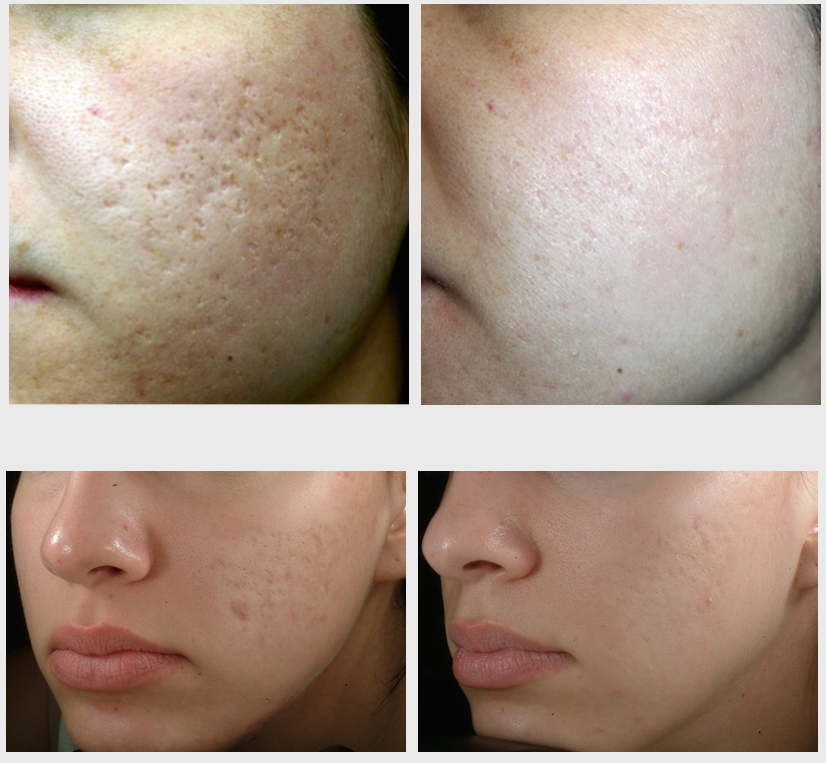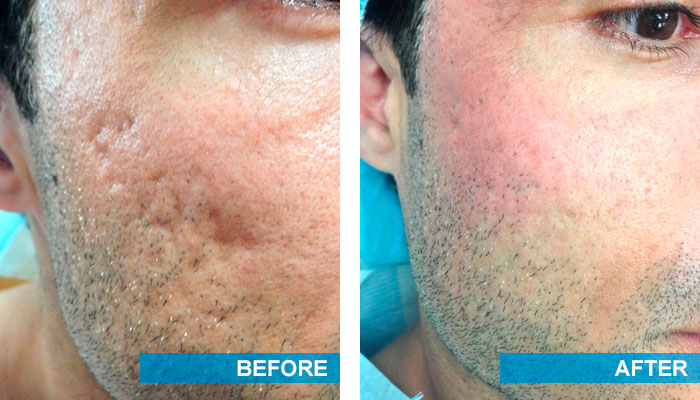Targeted Acne and Acne Scars Treatment: Redeem Your Clear Skin
Targeted Acne and Acne Scars Treatment: Redeem Your Clear Skin
Blog Article
A Comprehensive Guide to Taking Care Of Skin Problem: Concentrating On the Treatment of Acne Scars
Acne scars stand for a significant worry for lots of individuals, frequently impacting self-confidence and total skin health and wellness. skin rejuvenation treatments. Comprehending the different types of acne scars, such as hypertrophic and atrophic, is important for efficient administration and treatment. This guide lays out a range of restorative options, from topical agents to sophisticated expert interventions, each customized to resolve details scar attributes. Integrating lifestyle modifications and a devoted skin care routine can play a critical function in improving treatment end results. As we discover these methods, the inquiry arises: what mix will generate the most effective outcomes for optimum skin recovery?
Understanding Acne Scars
Understanding acne scars entails recognizing the complicated interplay between skin healing and the inflammatory procedures that occur during acne outbreaks. Acne creates when hair roots become clogged with oil, dead skin cells, and germs, resulting in inflammation. This inflammatory feedback is critical for combating infection however can likewise cause damage to the skin's cells.
When the body attempts to heal itself, it creates collagen, a healthy protein crucial for skin structure. The quantity and high quality of this collagen can vary, leading to different types of marks. Variables affecting scar development include the intensity of the acne, private skin type, genes, and the body's recovery reaction.
Timely management of breakouts reduces swelling and cells damages, which are vital variables in mark growth. Inevitably, recognizing the underlying mechanisms of acne and its recovery procedure is essential for effective management and prevention of acne marks.
Kinds Of Acne Marks
The complexity of acne scars can be categorized into a number of unique types, each mirroring the underlying skin damages and healing reaction. The most typical types consist of atrophic scars, hypertrophic marks, and keloids.
Atrophic marks are characterized by depressions in the skin and are usually the result of not enough collagen manufacturing throughout the recovery procedure. These scars can even more be categorized into icepick, boxcar, and rolling marks, each varying in shape and deepness. Icepick marks are slim and deep, appearing like little leaks, while boxcar marks have a broader, much more angular appearance. Rolling scars create a wave-like texture on the skin's surface.
Hypertrophic scars, on the other hand, are elevated and arise from an overflow of collagen during recovery. These scars might differ in size and can often fade over time yet might remain noticeable.
Keloids are a more extreme form of hypertrophic scarring, extending past the original injury site and often requiring more aggressive therapy options. Understanding these types is essential for establishing one of the most effective treatment method customized to an individual's details mark type and skin problem.
Topical Therapies

Topical treatments play a vital duty in taking care of acne marks, offering clients a variety of options targeted at boosting skin structure and appearance. These treatments primarily focus on advertising skin regeneration, decreasing pigmentation, and enhancing general skin tone.
One of one of the most extensively made use of topical agents is retinoids, which are derivatives of vitamin A. Retinoids promote collagen manufacturing and increase cell turnover, aiding to diminish the appearance of scars over time. In addition, alpha hydroxy acids (AHAs) and beta hydroxy acids (BHAs) can exfoliate the skin, removing dead skin cells and advertising a smoother surface.
Another reliable classification consists of topical anti-oxidants, such as vitamin C, which can assist to lighten hyperpigmentation connected with acne marks while offering anti-inflammatory benefits. Silicone gels and sheets have actually been shown to hydrate and flatten scars, making them less obvious.
Hydroquinone is frequently utilized for its skin-lightening residential or commercial properties, although it ought to be utilized very carefully because of possible adverse effects. Incorporating moisturizers that contain active ingredients like hyaluronic acid can better sustain skin recovery and enhance structure. For ideal results, it is advisable to speak with a dermatologist for personalized therapy suggestions.

Specialist Treatment Options
When it pertains to resolving more severe acne marks, patients typically transform to expert treatment choices that can provide a lot more significant results than topical therapies alone. These treatments are commonly administered by skin doctors or certified professionals and consist of different techniques customized to individual skin types and scar seriousness.
One of one of the most typical therapies is chemical linked here peels, which use acids to advertise and exfoliate the skin regeneration. This method can substantially reduce the look of surface scars. Microneedling, another effective from this source alternative, entails developing micro-injuries in the skin to boost collagen production, improving texture and reducing marks.
Laser therapy is also extensively utilized, with fractional lasers specifically targeting marked regions while maintaining bordering skin. This method can produce remarkable improvements in skin look over numerous sessions. Additionally, facial fillers are made use of to restore quantity and ravel unequal skin surfaces, supplying immediate, albeit short-lived, outcomes.
Way Of Living and Natural Remedy
Incorporating lifestyle modifications and natural home remedy can play a significant function in taking care of acne scars, complementing expert treatments. Maintaining a well balanced diet regimen abundant in minerals, antioxidants, and vitamins can assist in skin recovery - skin rejuvenation treatments. Foods high in vitamin C, such as citrus fruits, and those including zinc, like seeds and nuts, advertise skin regeneration and aid lower inflammation
Hydration is also important; alcohol consumption adequate water maintains the skin hydrated, assisting in its all-natural fixing procedures. Regular workout boosts blood circulation, which can boost nutrient distribution to the skin and enhance general skin tone.
In addition to dietary changes, incorporating topical home solutions can be valuable. Natural ingredients such as aloe vera, tea, and honey tree oil have antibacterial and anti-inflammatory buildings, which may assist in decreasing the appearance of marks. Scrubing the skin with gentle scrubs can likewise promote cell turnover, helping in the fading of scars with time.
Additionally, establishing a regular skincare regimen that includes sunlight defense is important, as UV direct exposure can darken scars. By incorporating these way of life adjustments and home remedies, individuals can improve their skin's recovery procedure and achieve an extra even skin tone.
Final Thought
Efficient management of acne marks requires a comprehensive understanding of their types and the hidden mechanisms included in mark formation. A mix of topical therapies, professional treatments, and lifestyle adjustments can dramatically boost skin healing and lessen scar exposure.
Recognizing acne scars entails recognizing the intricate interplay in between skin healing and the inflammatory processes that occur during acne episodes. Aspects affecting scar formation include the intensity of the acne, private skin kind, genetics, click resources and the body's healing reaction.
These scars can better be categorized right into icepick, boxcar, and rolling marks, each differing in shape and depth. Icepick marks are narrow and deep, looking like small slits, while boxcar scars have a broader, more angular look (acne treatment for sensitive skin).Effective administration of acne marks demands a detailed understanding of their types and the underlying systems entailed in scar formation
Report this page